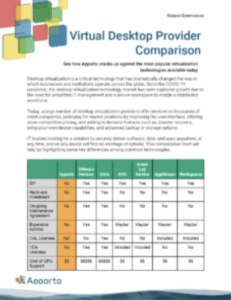The Cost Efficiency of Virtual Desktops for Higher Education Institutions
As the higher education sector continues to evolve, so does the need for cost-effective and innovative solutions to support student learning, faculty productivity, and administrative efficiency. The emergence of virtual desktops has presented an opportunity for institutions to leverage technology to address these needs while also reducing costs. In this article, we will explore the benefits, costs, and considerations of virtual desktops for higher education institutions.
Understanding Virtual Desktops in Higher Education
Virtual desktops, also known as virtualized desktop infrastructure (VDI), allow users to access their desktop environment from any device, anywhere, at any time. Unlike traditional desktops, virtual desktops are delivered to end-users as a service, enabling institutions to simplify desktop management, reduce hardware costs, and support BYOD policies. Virtual desktops essentially move the desktop environment from local machines to a centralized data center where they are hosted, managed, and secured by IT staff.
What are Virtual Desktops?
Virtual desktops are essentially a cloud-hosted version of a traditional desktop, with all of the same features and applications that users are accustomed to. The difference is that they are accessed remotely using an internet connection, rather than being installed on a local machine. This allows for greater flexibility and accessibility, as users can log in to their desktop environment from any device with an internet connection, including laptops, tablets, and smartphones.
Benefits of Virtual Desktops for Higher Education Institutions
The benefits of virtual desktops for higher education institutions are numerous. Perhaps the most significant advantage is the cost savings achieved through hardware consolidation, energy efficiency, and staffing savings. Here are some of the other key benefits of virtual desktops for higher education institutions:
- Improved security: Virtual desktops are hosted in the cloud, which means that institutions can implement more robust security measures to protect against cyber threats and data breaches. This is especially important in an age where cyber attacks are becoming increasingly common.
- BYOD support: Because virtual desktops are accessed remotely, they can be accessed from any device, which makes it easier for institutions to support BYOD policies. This is particularly relevant for students who may not have access to a personal computer and need to use a mobile device to access course materials.
- Scalability: As the number of students and staff grows, institutions can scale their virtual desktop infrastructure to accommodate the increased demand. This is important for institutions that are experiencing rapid growth or need to accommodate seasonal fluctuations in demand.
- Centralized management: Virtual desktops are managed centrally by IT staff, which simplifies management and reduces the need for on-premise support. This allows IT staff to focus on more strategic initiatives, rather than spending time on routine desktop management tasks.
- Improved performance: Virtual desktops can be configured to provide high-performance computing, which is important for students and staff who need to run resource-intensive applications.
- Disaster recovery: Because virtual desktops are hosted in the cloud, they can be easily backed up and restored in the event of a disaster. This ensures that students and staff can continue to access their desktop environment, even in the event of a catastrophic event.
Overall, virtual desktops offer numerous benefits for higher education institutions. They provide greater flexibility, accessibility, and security, while also reducing costs and simplifying desktop management. As such, they are becoming an increasingly popular option for institutions looking to modernize their IT infrastructure and provide a better experience for students and staff.
Comparing Traditional Desktops and Virtual Desktops
While virtual desktops offer numerous benefits, it is important to compare them with traditional desktops in terms of costs and other considerations. Here are some of the most important factors to consider when comparing virtual desktops and traditional desktops for higher education institutions:
Hardware and Maintenance Costs
One of the primary cost savings associated with virtual desktops is the reduction in hardware costs. Rather than purchasing individual desktops for each user, institutions can invest in a centralized data center to host virtual desktops, which reduces hardware costs significantly. Moreover, centralized management of virtual desktops simplifies maintenance and software updates, further reducing costs.
Additionally, virtual desktops eliminate the need for physical maintenance of individual desktops. This means that institutions can save money on hardware repairs and replacements, as well as on the cost of hiring IT staff to carry out these tasks.
Furthermore, virtual desktops can be easily scaled up or down depending on the needs of the institution. This means that institutions can avoid the cost of purchasing new hardware every time they need to expand their desktop infrastructure.
Software Licensing and Updates
One of the key challenges associated with traditional desktops is managing software licensing and updates. When institutions invest in virtual desktops, they can leverage technology to automate software updates, ensuring that users always have access to the latest software and applications. This reduces licensing costs and administrative overhead associated with managing software licenses.
Moreover, virtual desktops allow institutions to provide access to a wider range of software applications to their users. This is because virtual desktops can be accessed from any device with an internet connection, which means that users can access software applications that may not be available on their personal devices.
Energy Consumption and Sustainability
Institutions are under increasing pressure to reduce carbon emissions and promote sustainability. By consolidating desktops in a centralized data center, institutions can significantly reduce their energy consumption and carbon footprint. This makes virtual desktops a more environmentally sustainable option compared to traditional desktops.
In addition to reducing energy consumption, virtual desktops also promote sustainability by reducing the amount of electronic waste generated by traditional desktops. This is because virtual desktops are hosted in a centralized data center, which means that there is no need to dispose of individual desktops when they are no longer needed.
Overall, while traditional desktops may have their advantages, virtual desktops offer numerous benefits in terms of cost savings, software management, and sustainability. Institutions should carefully consider these factors when deciding which desktop infrastructure to invest in.
Implementation and Deployment of Virtual Desktops
Implementing and deploying virtual desktops successfully requires careful planning and attention to detail. Here are some of the most important considerations for institutions:
Assessing Institutional Needs
Before investing in virtual desktops, institutions need to assess their needs and determine if virtual desktops are the right solution. This involves looking at factors such as the number of students and staff, the types of software applications in use, and the availability of IT resources.
For example, if an institution has a large number of students who require access to specialized software applications, virtual desktops may be a good solution. Virtual desktops can provide access to these applications without the need for expensive hardware upgrades or installations.
On the other hand, if an institution has a small number of students who require access to basic software applications, virtual desktops may not be the most cost-effective solution. In this case, it may be more practical to provide students with access to traditional desktop computers.
Choosing the Right Virtual Desktop Solution
There are numerous virtual desktop solutions available, and it is important for institutions to choose the right one. This involves evaluating factors such as ease of use, scalability, security, and cost.
For example, some virtual desktop solutions may be more user-friendly than others, making them a better choice for institutions with less tech-savvy staff and faculty. Other solutions may be more scalable, allowing institutions to easily add or remove virtual desktops as needed.
Security is also a critical consideration when choosing a virtual desktop solution. Institutions need to ensure that their virtual desktops are secure and that sensitive data is protected. Some virtual desktop solutions may offer more robust security features than others, making them a better choice for institutions with strict security requirements.
Training and Support for Faculty and Staff
Successful deployment of virtual desktops requires a well-trained staff and faculty. Institutions need to provide training and support to end-users to ensure that they are comfortable using virtual desktops and that they understand the benefits.
Training and support can take many forms, from online tutorials and documentation to in-person training sessions. Institutions may also want to consider providing ongoing support to end-users, such as a help desk or IT support team.
By investing in training and support, institutions can ensure that their staff and faculty are able to use virtual desktops effectively and that they are able to take advantage of all the benefits that virtual desktops can offer, such as increased flexibility and productivity.
Conclusion
Virtual desktops offer numerous benefits for higher education institutions seeking cost-effective and innovative solutions for desktop management and support. By reducing hardware costs, improving security, promoting BYOD policies, and promoting sustainability, institutions can leverage virtual desktops to improve productivity and reduce costs over the long term.



